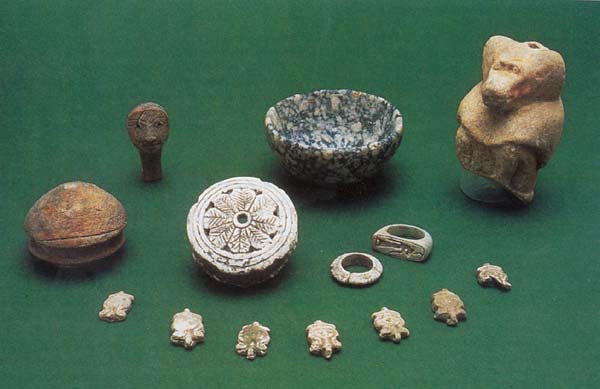Image Details

Ilan Sztulman/Tel Miqne-Ekron Excavation Project
A cache of ivory, faience and stone objects strongly influenced by Egyptian New Kingdom art of the 21st Dynasty (11th–10th centuries B.C.E.), were discovered on the highest level of the three floors in the north room of building 350. ln the front row are seven faience pendants depicting Hathor, the cow-eared goddess, with her characteristic coiffure. Directly behind the pendants, from left, are one ivory and one faience earplug (inserted into large holes created in the earlobe). The faience earplug has a rosette decoration. Also behind the pendants are two faience rings, one with a depiction of the goddess Sekhmet. Furthest back, from left, is an ivory human head, a speckled stone bowl and a painted limestone baboon.
Increased Egyptian influence in the late 11th century B.C.E. Ied to a dilution or debasement of Philistine material culture. Within a century, in the early tenth century B.C.E., Ekron was destroyed—perhaps by the newly ascendant Israelite king David or by Pharaoh Siamun—and then largely abandoned.
